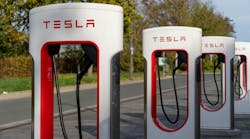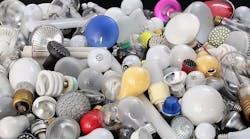Latest from Technology
In today’s environmentally conscious world, most people are used to recycling glass bottles, aluminum cans, or newspapers regularly. The light bulb, though, is one item that still eludes us when it comes to how to properly dispose of it.
“‘When my light bulbs burn out, where do I put them?’ Being in the lighting business for nearly 40 years, we get that question a lot,” says Shaan Lodhie, chief operating officer of LEDtronics. “Our company makes only LEDs, which are safe to dispose of in trash bins because they contain no hazardous chemicals. But that’s not necessarily the right option for environmental, safety, and other reasons. When it comes to CFL and fluorescent bulbs, both of which contain small amounts of mercury, chucking them in the trash can or with the recycling isn’t wise for intensified reasons.”
To help raise awareness of this issue, LEDtronics is sponsoring the Green Lights Initiative (GLI), a 60-day campaign that began on August 20 to help educate citizens and companies on how to properly recycle lighting. Donations from this initiative will go to Keep America Beautiful on November 15, coinciding with America Recycles Day.
Here’s a summary of practical tips being shared through the GLI campaign for the safe disposal of the most common types of light bulbs:
- CFL and fluorescent. Small amounts of the toxic chemical mercury make these bulbs harmful to your health and environment. Simply tossing them in the trash is unwise, and in some circumstances, unlawful. Because broken CFL and fluorescent bulbs are damaging to the environment if they enter landfills or the water supply, more stringent and rigorous steps are required to dispose. A local home improvement store or recycling center might be able to take this work (and the bulbs) off your hands.
- LED. Safe as it is to dispose of LEDs in trash bins due to an absence of toxic chemicals, recycling them is still the best option from an environmental and safety perspective. The better option to tossing them in your recycling container is to locate a recycling center that accepts LEDs, which contain reusable components.
- Incandescent and halogen. Like LEDs, these types typically contain no toxic chemicals. Disposing of them in a trash can or recycling bin is one solution, but a better one is handing them over to a recycling center. Because glass in incandescents and halogens shatters easily, wrapping the bulbs in recyclable packaging materials is also smart.
For more information on finding recycling centers that accept bulbs, visit Batteries Plus Bulbs or Earth911.











